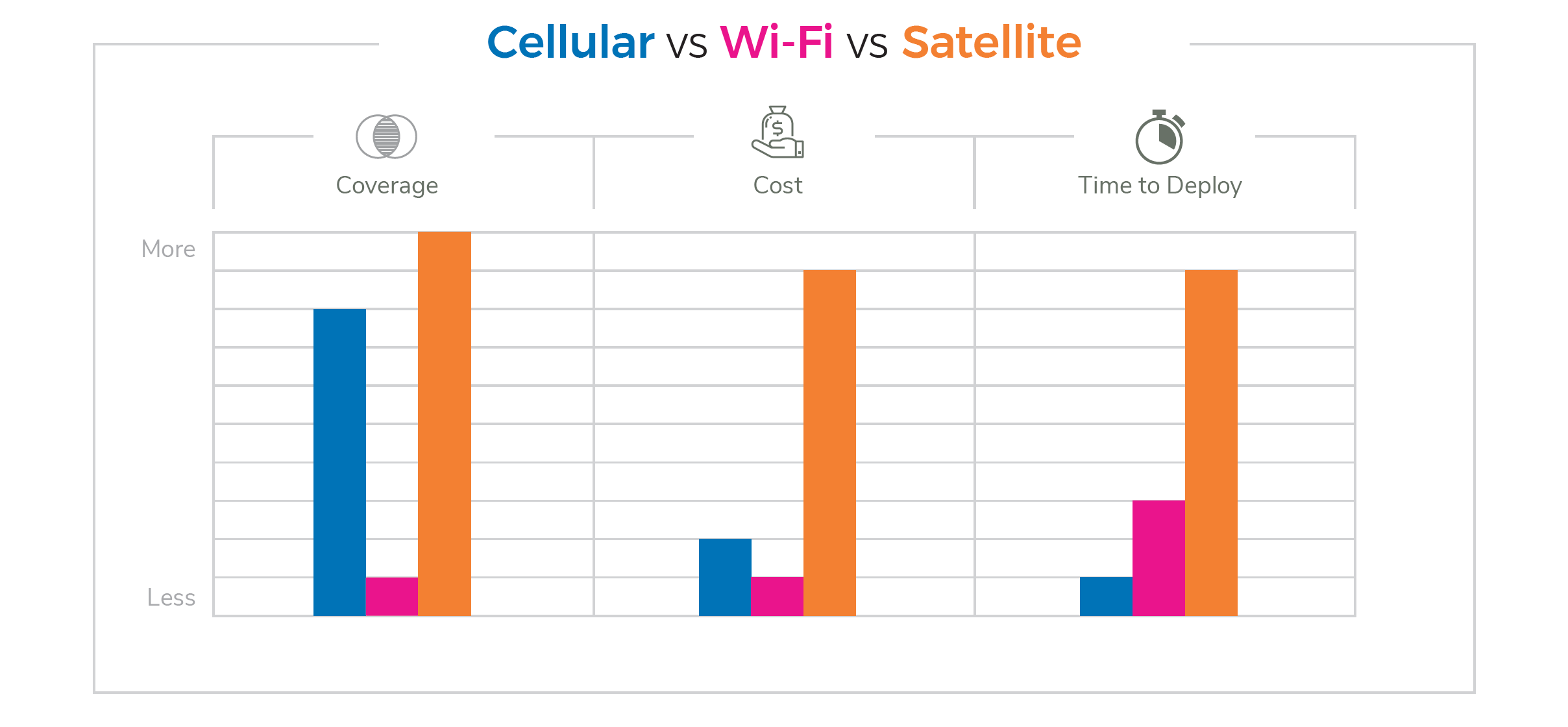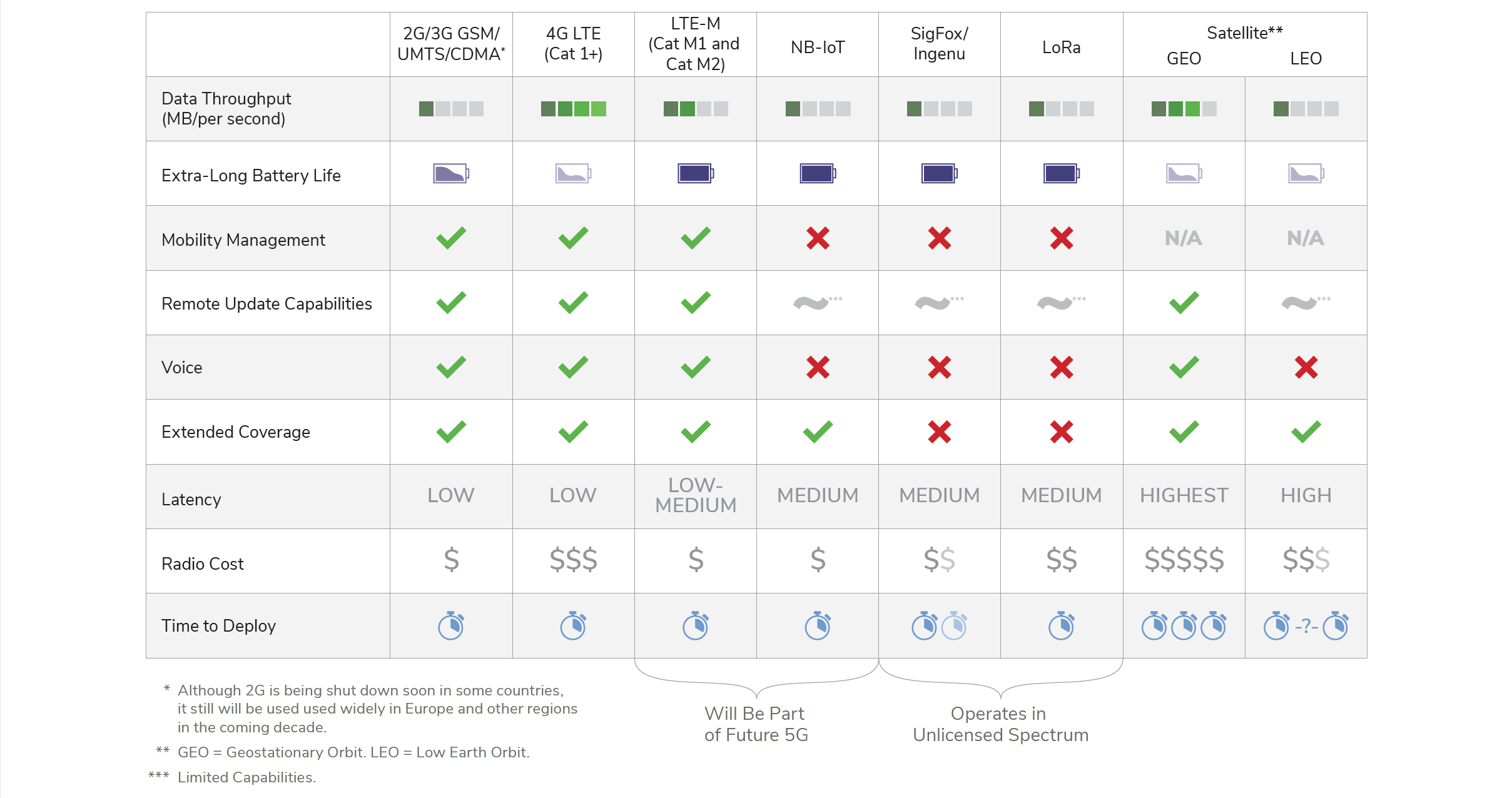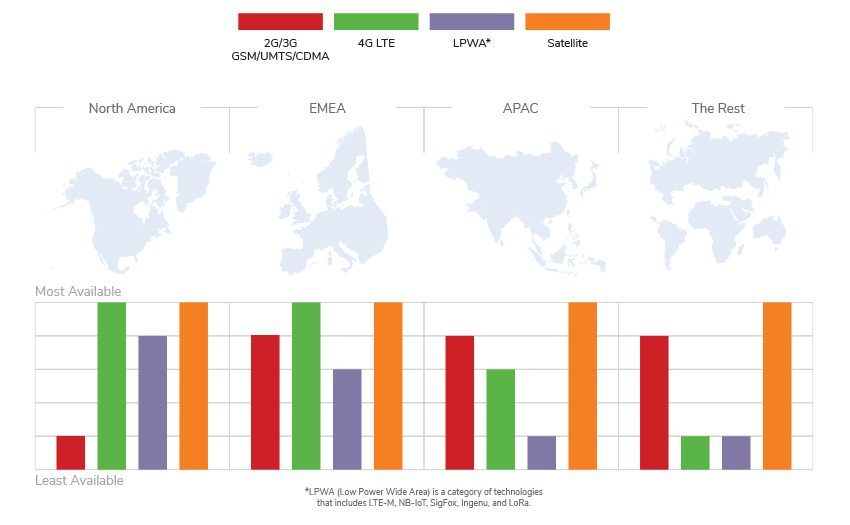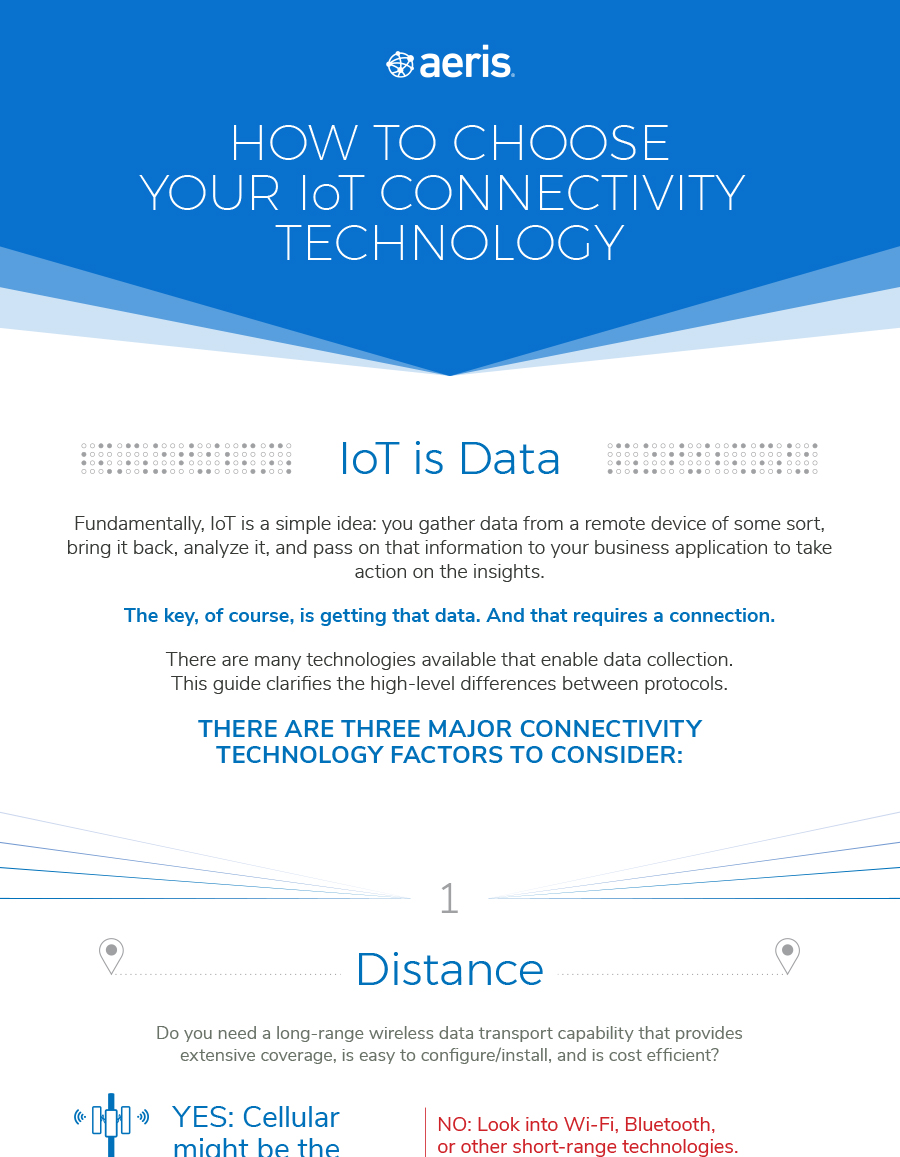
Fundamentally, IoT is a simple idea: you gather data from a remote device of some sort, bring it back, analyze it, and pass on that information to your business application to take action on the insights.
The key, of course, is getting that data. And that requires a connection.
There are many technologies available that enable data collection. Whether you are deploying your next generation IoT solution, or entering the world of IoT for the first time, this guide clarifies the high-level differences between protocols.
THERE ARE THREE MAJOR CONNECTIVITY TECHNOLOGY FACTORS TO CONSIDER:

Do you need a long-range wireless data transport capability that provides extensive coverage, is easy to configure/install, and is cost efficient?

Why Cellular?
Three reasons: It provides extensive coverage, has a relatively low cost structure, and is quick/easy to deploy without worrying about configuring either a local ISP or a Wi-Fi system or a firewall.


Which is the best technology for you based on the criteria of your application requirements?


Whether you pick a particular technology that is going to be used here in the United States or North America or perhaps over in Europe or in the Far East or Africa, you have some different choices to make because of availability of technology.
Check out this coverage comparison chart to get an idea of the relative availability of connectivity technologies around the world.





